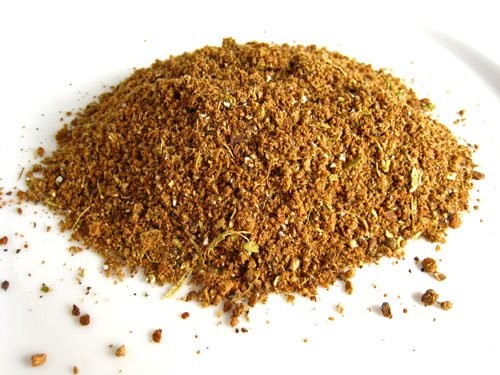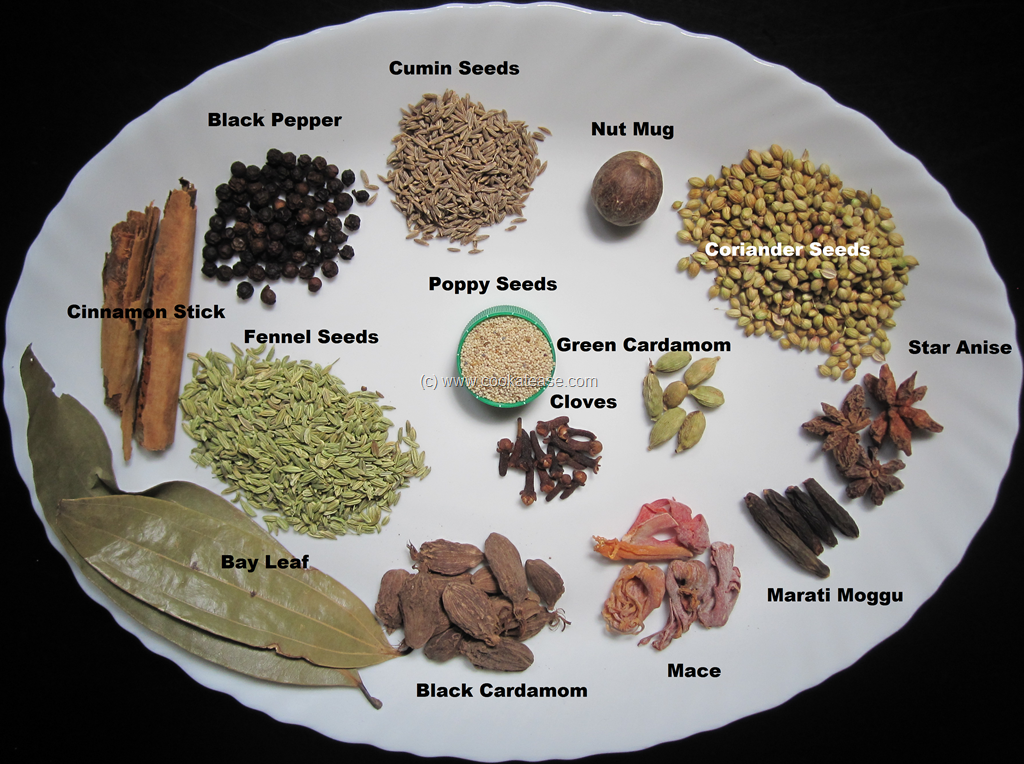Garam Masala
Post on: 16 Март, 2015 No Comment

Most of the Indian recipes I post has and will have Garam Masala as one of the ingredients. Hence, I thought of posting a recipe on the same. It wasnt an easy job though. After eyeballing the internet, I found hundreds of recipes for Garam Masala. Some of the compositions made my eyebrows raise. I educated myself on the different blends available around the world. I am not surprised by the fact that some think Garam Masala is a Curry powder. Even some of the Indian Celeb Chefs on cooking shows refer it as Indian Curry Powder.
Garam Masala is not the regular Curry powder you find on the spice aisle of the supermarket. It is the inspiration for Curry Powder. Many people believe that all Indian curries are made with curry powder which is not true. The word Curry comes from the Tamil (South Indian) word Kari meaning a sauce. Curry powder is a British invention to capture the flavors of Indian cooking without the effort of custom blending, roasting and grinding spices. Having lived a decade in Madras (Now Chennai) I can vouch that there is no such thing as Madras curry powder. Yet another Garam masala inspired spice blend holding the name of my city ![]()
Spices being a crucial element of Indian cuisine, garam masala has been used for centuries by Indian cooks. It is also used in Iranian and Pakistani cooking and linked to a Persian spice blend known as advieh. which means medicine in Arabic intended to bring out the medicinal qualities of food.
Garam masala is not a spice in itself. Garam masala is the Indian equivalent of French herbes de Provence. Garam means hot and masala means mixture of spices in Hindi, which simply indicates the intensity of the spices rather than the heat content. A masala can either be a mixture of dry roasted spices or a wet paste. Garam masala is a dry spice blend. It is a slightly sweet, warm, savory and aromatic spice blend with a complex profile. The pungency of the garam masala comes from the heat giving ingredients like cloves and black peppercorn. This blend is a must-have in almost all Indian cooking, especially Mughlai cuisine.
After trying many commercially prepared spice blends that is similar to saw dust lacking both aroma and flavor, I decided to prepare my own spice mixture. Store bought blends have little resemblance to the freshly ground mix. This homemade blend is nuanced with complex and rich flavors, but do not overpower the dish. It is used for the fragrant flavor not heat. It has a unique property of enhancing the flavor of nearly all Indian curries with an earthy and smoky scent.
Garam masala is best made fresh just before you begin cooking, to save time you can make a batch ahead. This is adjustable, If you dont like certain flavors and intensity just play with the proportions of the spices. You can experiment and alter it to suit your needs. Once you taste the difference that this pinch of magic makes in your cooking, you will find it worth the investment in your pantry.
This is my take on this indispensible spice blend.
Yields about 1/2 cup

- 5 Cinnamon sticks ( 1 1/2 inch) (Dalchini)
- 12 Cloves buds (Laung)
- 13 Green Cardamom pods (Elaichi)
- 5 Black Cardamom pods (Badi elaichi)
- 5 Indian Bay leaves (Tej patta)
- 4 teaspoons Cumin seeds (Jeera)
- 1 teaspoon Caraway seeds (Shahjeera)
- 1 teaspoon Fennel/ Aniseeds (Saunf)
- 1/2 teaspoon Carom seeds (Ajwain)
- 2 teaspoons Black Peppercorns (Kali mirch)
- 5 Mace blades (Javithri)
- 2 Star Anise (Chakra phool/ Anasphal)
- Pinch of grated Nutmeg (Jaiphal)
- Pinch of Saffron (Kesar)
Know your spices before making this blend
Cinnamon It is sttrongly aromatic, sweet, pleasant, warm and but hardly bitter or astringent. It is similar to Cassia. Cassia is more intense than Cinnamon, but harder and woodier. It is fine to use either.
Cloves It has a warm aroma with bitter taste.














